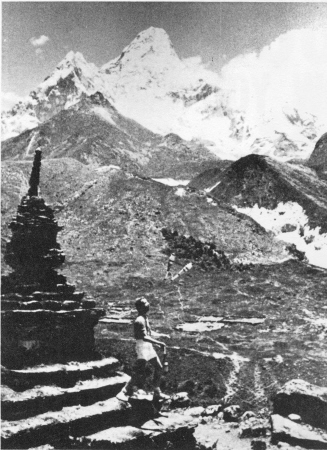At
last, a major novel has appeared in which the hero is a juggler. The book
is Lord Valentine's Castle, by Robert Silverberg (Bantam Books, paperback,
447 pages, $2.95), a well-written fantasy with elements of science fiction
skillfully blended in. It also contains some surprisingly accurate
descriptions of both the physical and mental processes involved in
juggling.
In
a preface, Silverberg acknowledges the technical assistance of jugglers
Catherine Crowell and the Flying Karamazov Brothers, and in my opinion, he
made good use of their expertise.
The
story is set on the distant planet of Majipoor, far removed in both time
and space from present-day Earth. It is populated by at least a dozen
non-human races plus a minority of humans. The main character, suffering
from amnesia at the beginning of the story, meets a wandering troupe of
jugglers who offer to teach him their art. He learns quickly and hires on
for a tour of the countryside.
The
tour, however, soon turns into a quest which carries the small band of
performers across the length and breadth of Majipoor. As the true nature
of the quest is not made clear until midway through the book, I shall not
reveal it here. Suffice it to say they have plenty of exciting adventures
along the way.
Besides
our hero, the juggling troupe includes two other humans and six Skandars,
huge shaggy creatures with four arms apiece. And they are the least
unusual of the beings that the reader will encounter in this book.
Silverberg has a great imagination, and
a real gift for describing fantastic flora and fauna in such a way that
they seem quite plausible.
As
mentioned earlier, the descriptions of juggling in this book are what
makes it stand out. The chapter in which the hero is being taught to
juggle is particularly well done. I think a person could almost learn the
basic cascade from reading that section.
And
the instruction is not dull reading either, for Silverberg translates the
familiar "Carlo method" into the language of fantasy.
For
example, the student is told to hold his arms just so and imagine that a
tray of precious gems is resting on them. Later in the book, there is
mention of half-juggling, take-aways, blind-folded juggling, and various
passing patterns, including feeds and back-to-back passing. Although this
is a fantasy, with sorcery and dream manipulation, the juggling is all
quite down-to-Earth (if you'll forgive an inappropriate metaphor). Perhaps
most importantly, Silverberg gives the reader a feel for the satisfaction
and inner peace one can obtain when juggling.
(Even
if you don't read the book, you should go to a bookstore and look at its
beautiful cover painting. You will be amazed to see an accurate portrayal
of juggling, i.e., objects in the hands as well as in the air. The artist
is not credited in the book, but he or she produced a marvelous work of
art. Several jugglers are shown at an outdoor festival, surrounded by an
audience of many races, both human and otherwise. The performers include
a woman with three clubs, a man juggling balls and a trio of the four
armed Skandars passing daggers.)
